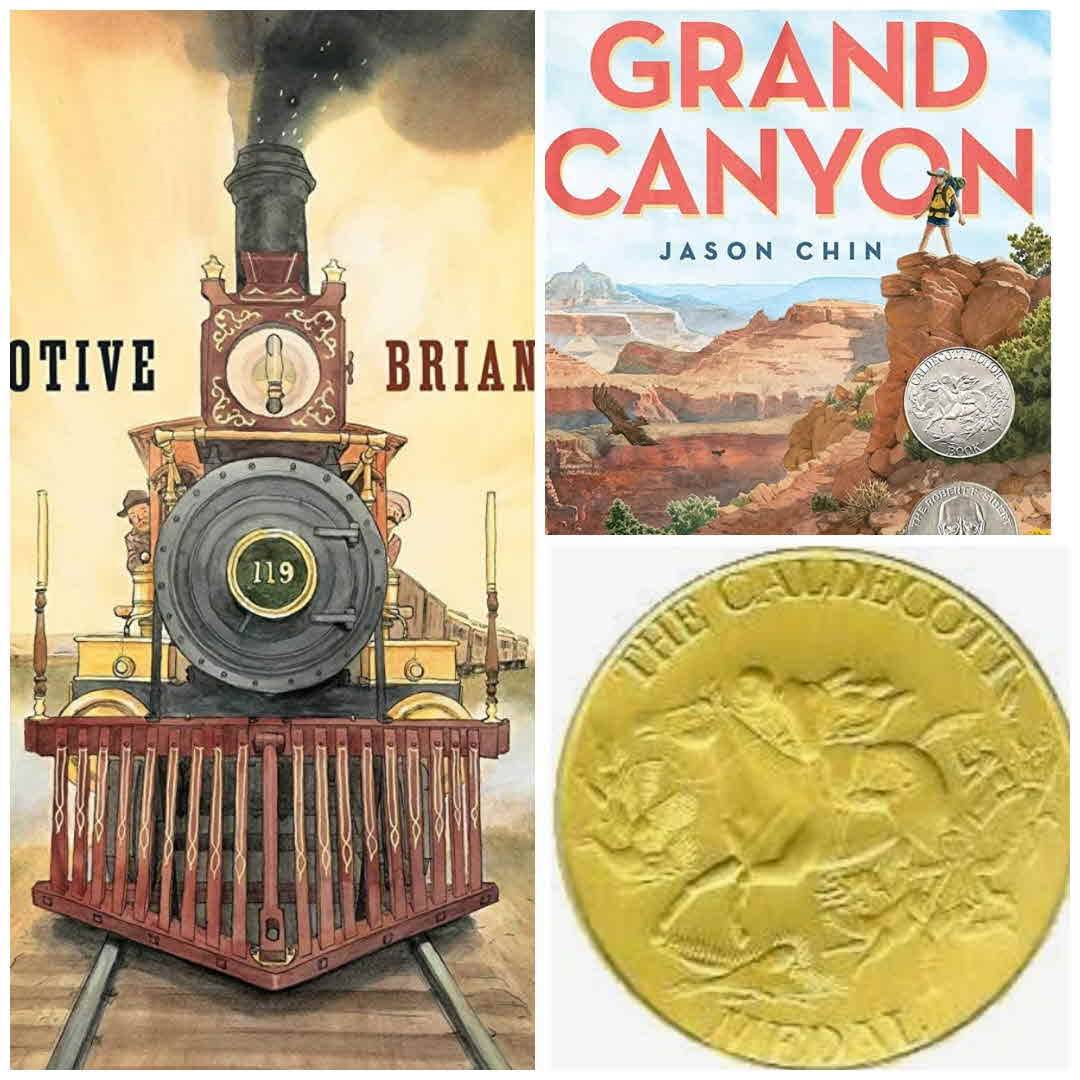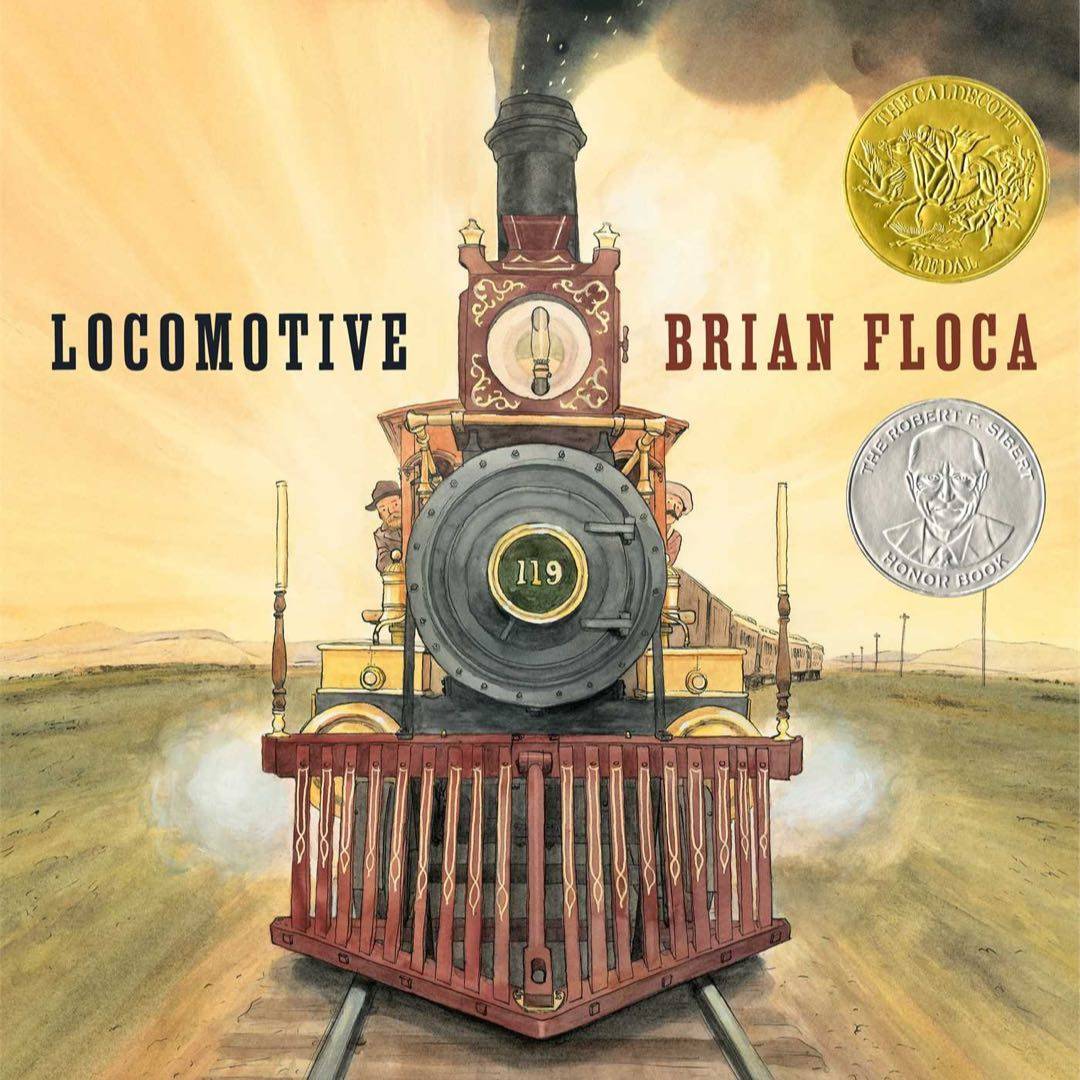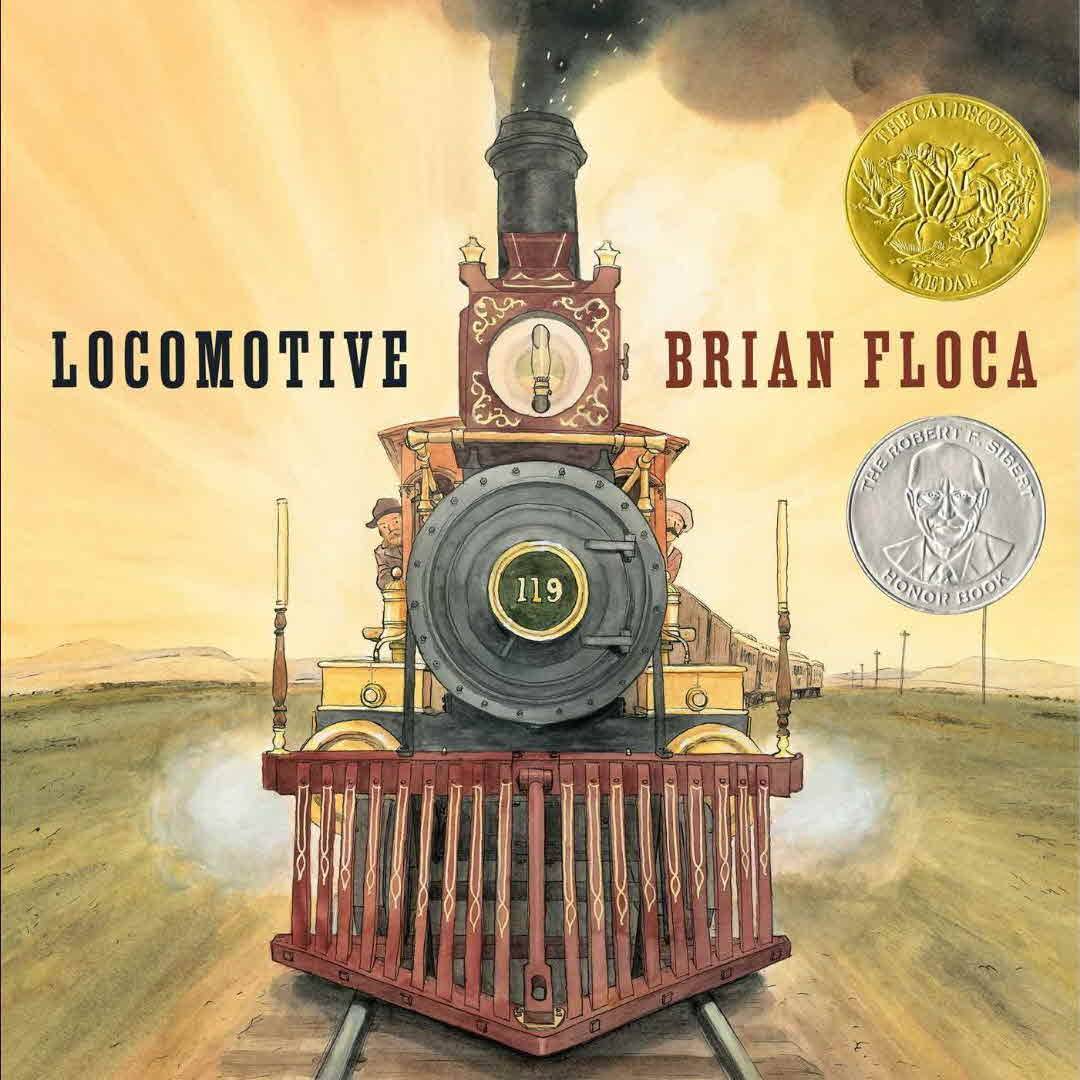“With a great, loud roar, the locomotive moves, the rails hum beneath as it powers through the land.“
“With a great, loud roar, the locomotive moves, the rails hum beneath as it powers through the land.“
In Locomotive, Brian Floca invites readers to experience the magic of the steam engine as it travels across America. Through rich, detailed illustrations and engaging storytelling, Floca brings to life the history and power of the locomotive, showing its significance in shaping the country.
Locomotive by Brian Floca is a stunning and detailed picture book that takes readers on a ride through the history of trains in America. Through breathtaking illustrations and an informative narrative, Floca captures the excitement and engineering marvels of steam locomotives. The book not only explores how trains were built and how they operate but also highlights the impact they had on American society.
“The iron horse, the great machine! Fifty feet and forty tons, wheels spinning, rods swinging, motion within motion, running down the track”
I really like this book and would use it in my classroom as a part of a social studies lesson or activity, or even just to have it in my classroom library. Very interactive and has good pictures and is an overall very dynamic book
Locomotive written by Brian Floca is a detailed nonfiction book about how the transcontiental railroad was built. The book talks about the need for a railroad that runs across the states used to transport people and things all the way from the plains through the mountains and to the pacific sea. It give great descriptions about what it was like to travel by train and how it worked all those years ago.
“Westward, Westward, runs the train, through the prairies, to the Great Plains, on to the frontier.“
I would love to have this book in my classroom library. Especially for any child who is interested in trains. They will be so engaged reading this book and learn some new interesting facts.
This book followed the story of a train that travelled across the transcontinental railway. This is great for older and younger children. They will love learning about the details of building the railway along with the journey it took.
A fun and beautiful book about the journey of a train on the transcontinental railroad (when it first started out). Captures the wonder of new technology and different landscapes. Good historical book.
“It rolls among sage and below strange stones-- stranger and stranger the farther you go, until every mile brings some new wonder.“
Could be used for many disciplines (social studies, science, literature)! If reading aloud, this book could involve a lot of reader participation (calling out “all aboard“ or repeating HUFFs and CHUGs).
“This is how you travel, how you move, how you go from here... to there!”
A detailed look at early train travel across America in the 1860s.
Use to explore transportation history and the expansion of the U.S. westward.
The pictures are great as well as the message.
“He is the master of his machine, he knows her moods and tempers, where to set her bars and levers, when to slow down and when to speed up, where to run her wide open….”
Although I loved this story, I do think it was lengthy and drug out. I think younger children would struggle to keep attentive during this story. I would recommend either breaking it up in chunks or saving it for older grades such as fourth or fifth.
Locomotive by Brian Floca, 2013. Caldecott Award Winning Book. I think this is a very exciting and engaging book. There are many sound effects that a teacher could use when reading this book. This book goes into details of a train being built as well as its functions and crew. This story describes the train‘s journey with its passengers on their westward expedition.
“The engine huffs and hisses, the engine bangs and clanks!“ This is an example of the onomatopoeia.
This book is written in free verse and is a pretty lengthy book. Each page is filled very different illustrations and shows lots of onomatopoeia as well. I would recommend reading this book to early elementary classes because it has a lot of interesting pictures and detail as well as tree ideas about trains.
This book is all about how a family rode a a train for the first time in 1869. It goes into detail about the what the train looked like, the people on the train, the landscapes they saw and much more.
“Locomotive“ can be a useful addition to your teaching resources whether you are emphasizing particular academic objectives or just fostering a love of learning in your pupils. It's a useful and entertaining tool that teachers and students may use together. The book can be integrated into various subject areas, such as history, science, art, and language arts, making it a versatile resource for educators.
Locomotive by Brian Floca is a non-fiction children's book, which is mostly written in free verse, follows a family over the summer of 1869 as they travel across the country by steam train. The book describes the first transcontinental railroad's construction and operation, including its effects on the environment, workers, and passengers.
This non-fiction book, written primarily in free verse, follows a family as they ride a transcontinental steam engine train in summer of 1869.
Awards won: Caldecott Medal
Purpose of Award: Most distinguished American Picture Book for Children
Author: Brian Floca
Date of publication: 2013
Genre: Non-fiction

Locomotive is an (RF)book by Brian Floca. It has won the Caldecott, Robert F. Sibert, and the National Council of Teachers award. This story is about all the new Locomotive's features and the experience the families who travel in it can have. At the end of the story, the author included a page with all the train parts' names and an explanation of their purpose. #UCFLAE3414SP21

Both books have wonderful illustrations!
Grand Canyon gets a 3⭐rating. I was just a little bored with all the geology facts.
Locomotive gets a 4⭐ rating. This was an entertaining story about a family trip on the Transcontinental Railroad.
I found both books on overdrive as a read aloud video.
#MiddlegradeMarch #MGMarch @megnews

I came across this book, and I thought that it would be a book about trains, which it is, but it‘s more than that! It‘s actually a really great book that utilizes poetry through a free verse, and it is such a great example of the use of onomatopoeia! I would love to show students this book because I really think they would love to see this as a read aloud in a VERY dramatic way! I will definitely want to use this in a Language Arts lesson!
Review: Locomotive by Brian Floca, 2013, is a Caldecott Award winners set in 1869 about trains, crews, and family riding America's brand-new transcontinental railroad.
Blurb: This books illustrations are beautiful and add to the quality of the story. I would use this during a real aloud and point out different things as I read the story to children.
Quote: ““Here is a road made for crossing the country, a new road of rails made for people to ride.

#UCFLAE3414F19
Author/Illustrator: Brian Floca
This NF picture book is an exceptional illustrated story that follows a family heading West on the brand new transcontinental railroad, describing every step of the journey in an informative and expressively fun way. It'd be good to use for an IR, as there is a lot happening on the pages so the student should be able to decipher the text and analyze the award-winning illustrations at their leisure.

This Caldecott Medal, Sibert Honor & New York Time Bestseller RF book is about a brand new, huge train that is filled with the crew & the new passengers who begin their 1,0000 mile long ride. It explains how much work it is to make the train ride smoothly. It is very descriptive and allows the reader to feel as though they are on the train themselves.
https://www.rif.org/literacy-central/book/locomotive
“ come hear the hiss of the steam, feel the heat of the engine, watch the landscape race by. Come ride the rails, come cross the young country!”
It is a Caldecott Medal winner, Dibert Honor book, and New York best seller. It is rich with detailed sensory explorations of America‘s railroad systems.
This story was published in 2013. It is a nonfiction book written primarily in free verse. These pages come alive with the details of the trip and this sounds, speed, and strength of the mighty locomotives.
The illustrations are so bold and vibrant. The illustrator highlights the essential parts of the stories.